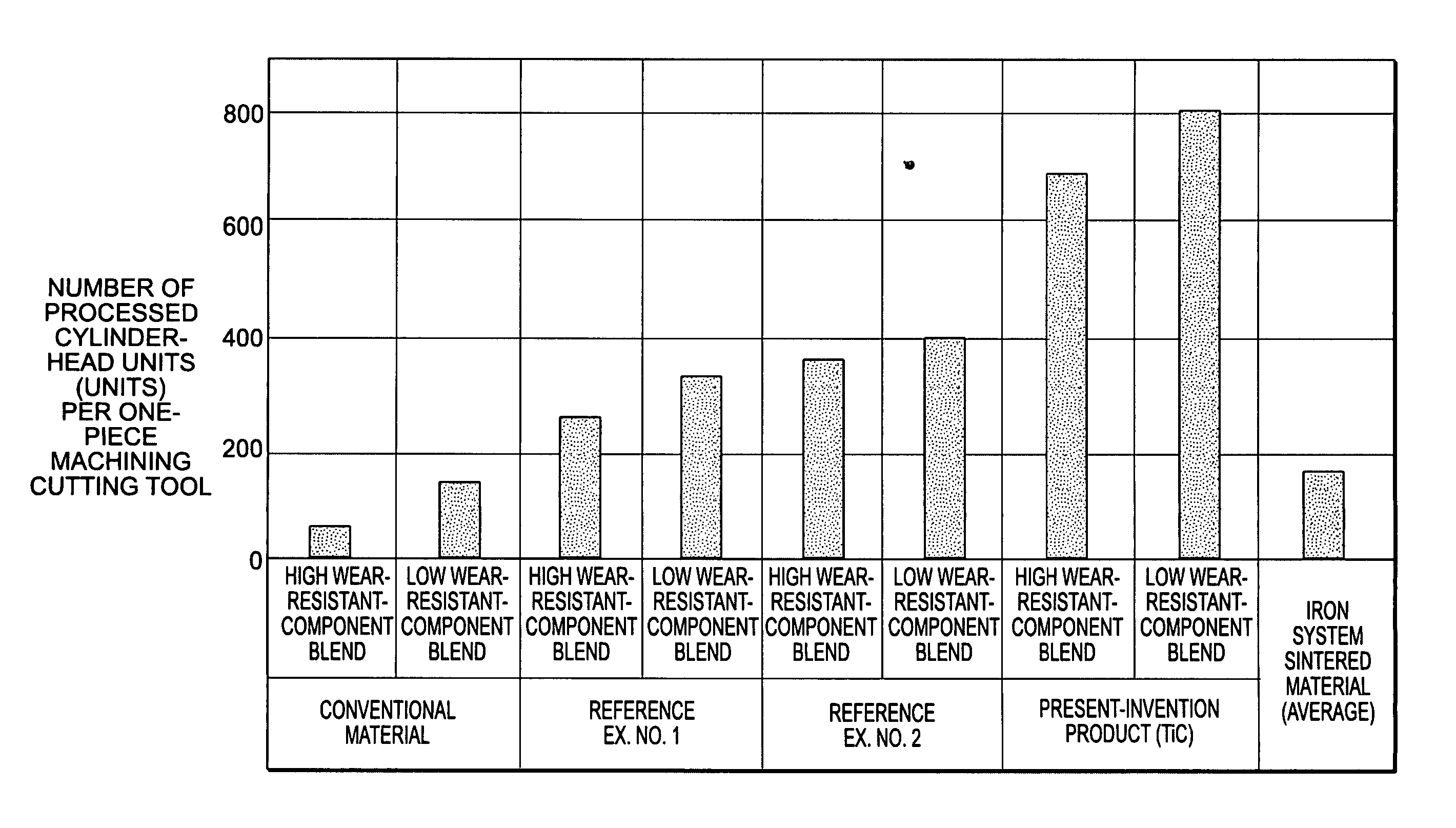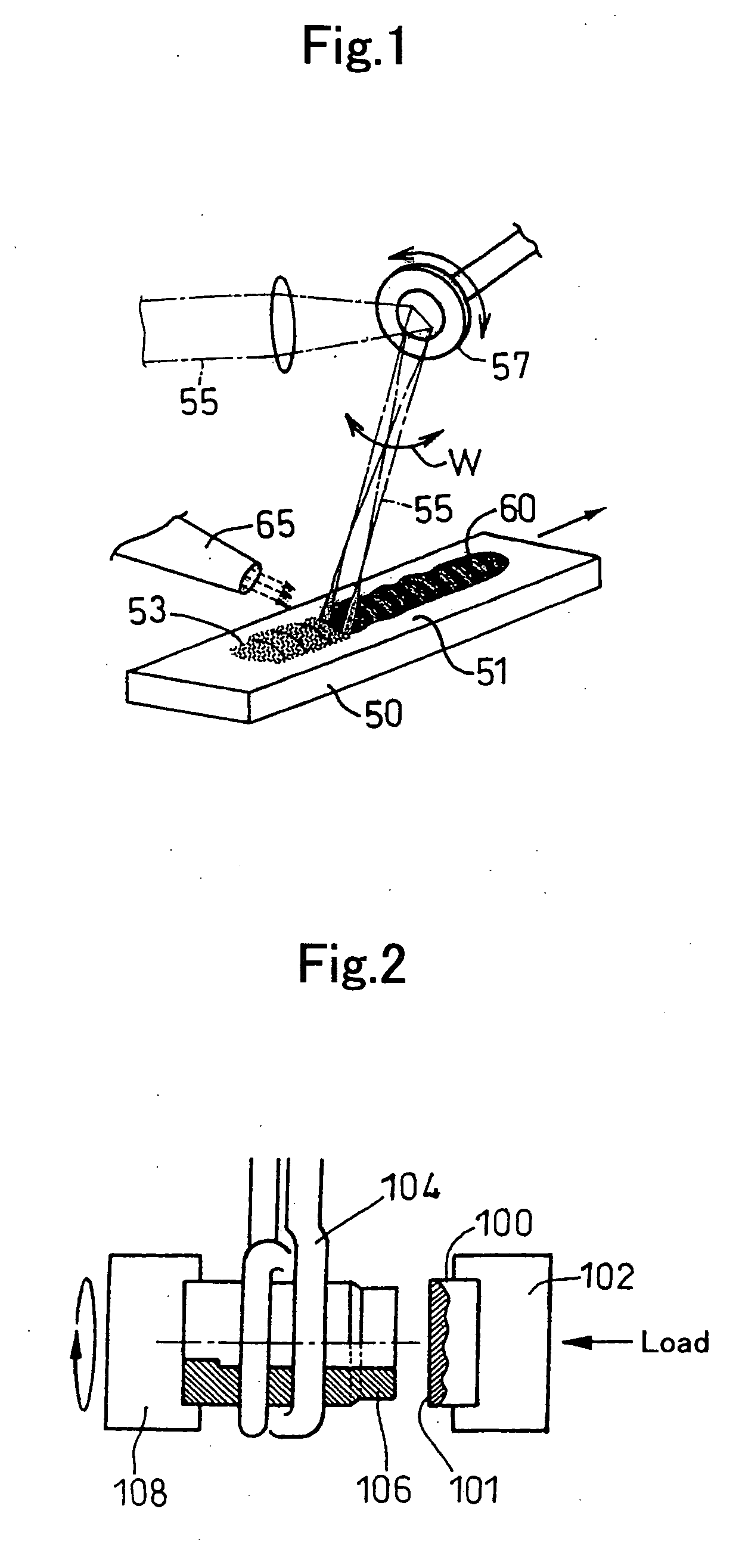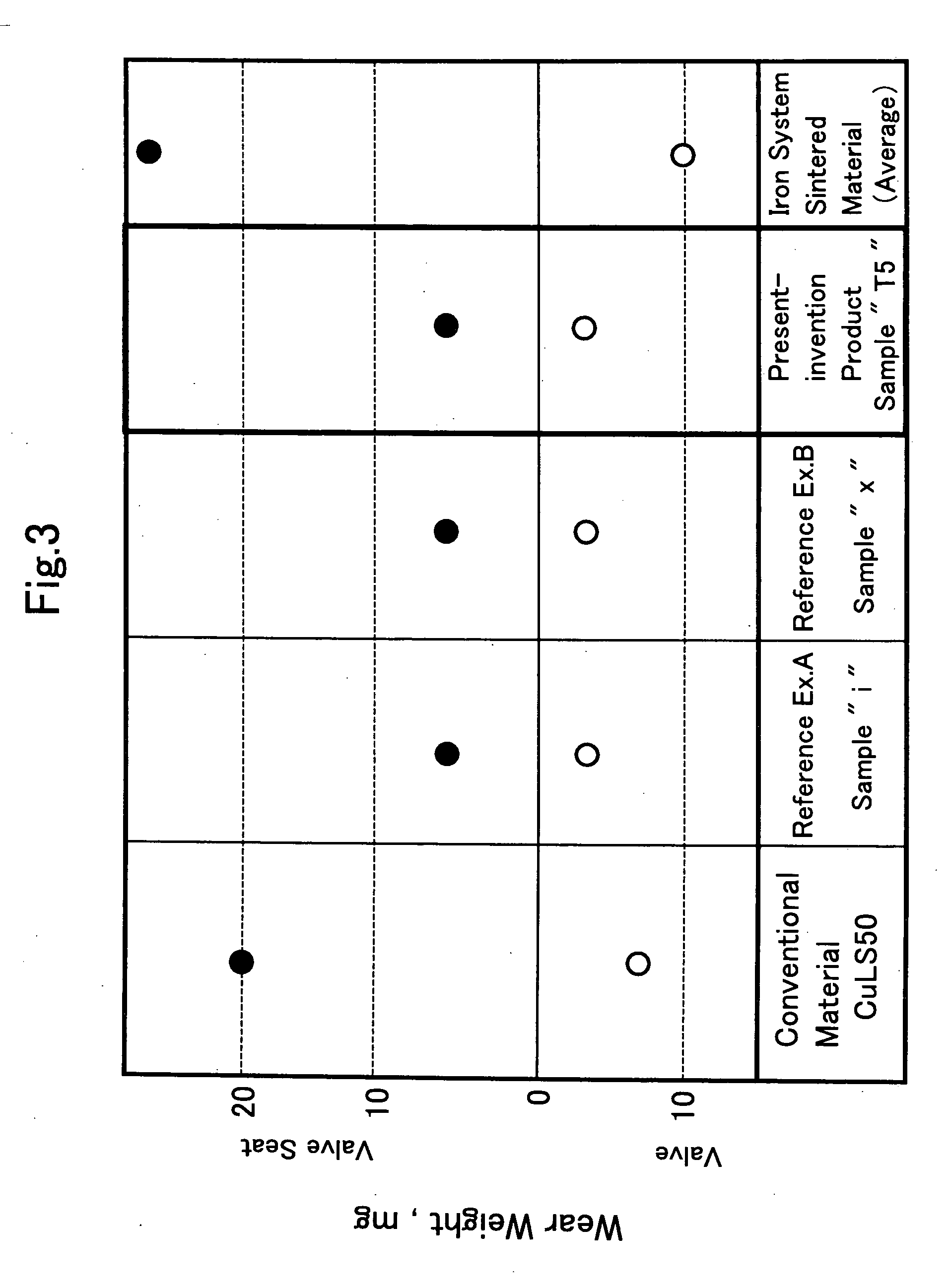Build-up wear-resistant copper-based alloy
a technology of build-up and copper-based alloys, applied in the direction of machines/engines, mechanical equipment, coatings, etc., can solve the problems of affecting the machinability the cracking resistance of the build-up wear-resistant copper-based alloy degrades, and the building-up yield ratio is likely to degrade, so as to machinability, satisfy the cracking resistance, and enhance the cracking resistance properties
- Summary
- Abstract
- Description
- Claims
- Application Information
AI Technical Summary
Benefits of technology
Problems solved by technology
Method used
Image
Examples
example no.1
Example No. 1
[0047] Hereinafter, Example No. 1 of the present invention will be described specifically along with reference examples. The compositions (analyzed compositions) of samples (“T” series, “T” means the containment of titanium) according to build-up wear-resistant copper-based alloys used in the present example are set forth in Table 1. The analyzed compositions basically conform to the blended compositions. As set forth in Table 1, the compositions of Example No. 1 do not contain cobalt, iron and molybdenum as active elements, but, contain titanium, and are set up within the compositions, which include nickel: 5.0-20.0%, silicon: 0.5-5.0%, and manganese: 3.0-30.0%, as well as titanium: 3.0-30.0%, by weight %, and the balance: copper. Note that, Sample “i,” Sample “a,” Sample “c,” Sample “e,” Sample “g,” and Sample “x,” which are set forth in Table 1, deviate from the compositional range of claim 1, and specify reference examples.
[0048] The aforementioned respective sampl...
example no.2
Example No. 2
[0059] Hereinafter, Example No. 2 of the present invention will be described specifically. In the present example as well, built-up layers were formed under similar conditions to Example No. 1 basically. The compositions of samples (“H” series, “H” means the containment of hafnium) according to build-up wear-resistant copper-based alloys used in the present example are set forth in Table 2. As set forth in Table 2, the compositions of Example No. 2 do not contain cobalt, iron and molybdenum actively, but, contain hafnium, and are set up within the compositions, which include nickel: 5.0-20.0%, silicon: 0.5-5.0%, manganese: 3.0-30.0%, hafnium: 3.0-30.0%, by weight %, and the balance: copper.
[0060] When examining the built-up layers formed of the respective samples, the hard particles, which had hard phases, were dispersed in the matrices of the built-up layers. The volumetric ratio of the hard particles, which occupied in the build-up wear-resistant copper-based alloys,...
example no.3
Example No. 3
[0063] Hereinafter, Example No. 3 of the present invention will be described specifically. In the present example as well, built-up layers were formed under similar conditions to Example No. 1 basically. The compositions of samples (“Z” series, “Z” means the containment of zirconium) according to build-up wear-resistant copper-based alloys used in the present example are set forth in Table 3. As set forth in Table 3, the compositions of Example No. 3 do not contain cobalt, iron and molybdenum actively, but, contain zirconium, and are set up within the compositions, which include nickel: 5.0-20.0%, silicon: 0.5-5.0%, manganese: 3.0-30.0%, zirconium: 3.0-30.0%, by weight %, and the balance: copper.
[0064] As set forth in Table 3, when having a look at the cracking occurrence rate, regarding the built-up layers formed of the samples according to Example No. 3, the cracking occurrence rate was low, and was 0%. Even when the zirconium content was changed, the cracking occurr...
PUM
| Property | Measurement | Unit |
|---|---|---|
| Fraction | aaaaa | aaaaa |
| Fraction | aaaaa | aaaaa |
| Fraction | aaaaa | aaaaa |
Abstract
Description
Claims
Application Information
 Login to View More
Login to View More - R&D
- Intellectual Property
- Life Sciences
- Materials
- Tech Scout
- Unparalleled Data Quality
- Higher Quality Content
- 60% Fewer Hallucinations
Browse by: Latest US Patents, China's latest patents, Technical Efficacy Thesaurus, Application Domain, Technology Topic, Popular Technical Reports.
© 2025 PatSnap. All rights reserved.Legal|Privacy policy|Modern Slavery Act Transparency Statement|Sitemap|About US| Contact US: help@patsnap.com



